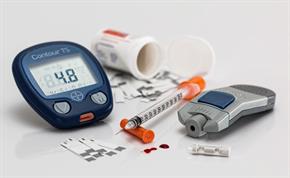
“Think hypo, think referral.”
That’s the message from a paramedic after attending one of our diabetes learning events last month.
Nick joined 22 EEAST colleagues for the education event in Ipswich to learn more about types of diabetes, standards of care, and symptoms, management and prevention of the lifelong condition that affects more than three million people in the UK alone.
Joined by diabetes consultants and clinical educators who specialise in the condition and can give expert advice, the event was run in coordination with the Eastern Academic Health Science Network (EAHSN).
Nick spoke to Need to Know about why he wanted to take part: “Around 28% of patients that present with an acute hypoglycaemic event sadly die within a year. It’s a serious issue and the refresher training helps us to develop better patient care for these vulnerable people.”
The Trust has held five of these events so far and is hoping to offer more soon – so watch this space.
Here Nick shares some of his learning, in particular about sulfonylurea medicines, from the day:
“There are several types of sulfonylurea medicines used to treat diabetes. These include gliclazide, glimepiride, and glipizide. These drug groups stimulate insulin production from the pancreas, but this isn’t regulated and once insulin production has released sugars into the body, the pancreas can continue to produce insulin, hence causing hypoglycaemic events, or ‘hypos’.
“Sulfonylurea medicines are prescribed for people with type-2 diabetes when eating healthy foods, weight loss, and exercise do not keep the blood sugar level within a target range. They are helpful for people who cannot make enough insulin or who have become resistant to the insulin the body makes.
Usually a low dose is started, and this can be increased if necessary every few weeks until there is good control of the blood glucose level. Patients can take a sulfonylurea in addition to other glucose-lowering tablets if one tablet does not control blood glucose well enough on its own.
“Our ‘predicted’ hypo patients, Type 1 on insulin, only account for around 10% of the population; the rest are Type 2 and either tablet, diet or insulin managed. As mentioned, sulphonylureas can cause patients to have a hypoglycaemic attack. These patients are only managed by six-monthly diabetic reviews, so there is an increased risk in the elderly through poor diet, ill-health, and generally badly managed diabetes.
“I’d really encourage staff to ‘think hypo, think referral’. The risk factors and the mortality figures of hypoglycaemic patients presenting to A&E are staggering. If we can help change that by referring properly and improving our patient care, we would be making a real difference.”
Remember, if you need to make a diabetes/hypoglycaemic referral, you need to call SPOC on 0845 602 6856.